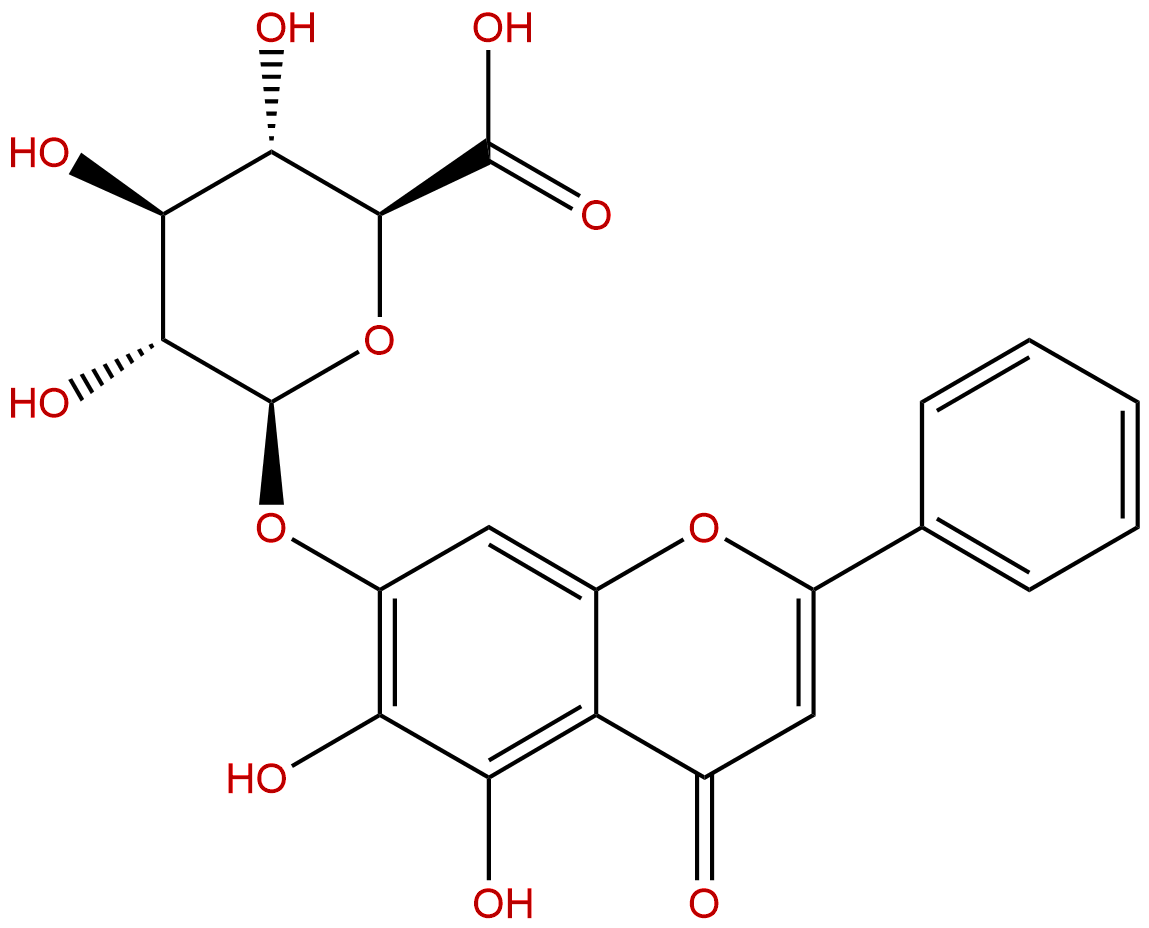
BaicalinCAS No.:21967-41-9
|
||||||||||
 |
|
|
||||||||

| Catalogue No.: | BP0233 |
| Formula: | C21H18O11 |
| Mol Weight: | 446.364 |
Product name: Baicalin
Synonym name: Baicalein 7-beta-D-glucuronide; Baicaloside
Catalogue No.: BP0233
Cas No.: 21967-41-9
Formula: C21H18O11
Mol Weight: 446.364
Botanical Source: Scutellaria spp., Oroxylum indicum and other plant spp.
Physical Description: Yellow powder
Type of Compound: Flavonoids
Purity: 95%~99%
Analysis Method: HPLC-DAD or/and HPLC-ELSD
Identification Method: Mass, NMR
Packing: Brown vial or HDPE plastic bottle
Storage: Store in a well closed container, protected from air and light. Put into refrigerate or freeze for long term storage.
Whenever possible, you should prepare and use solutions on the same day. However, if you need to make up stock solutions in advance, we recommend that you store the solution as aliquots in tightly sealed vials at -20℃. Generally, these will be useable for up to two weeks.
The product could be supplied from milligrams to grams, up to kilograms
Inquire for bulk scale.
Descriptions:
Baicalin is a flavonoid and a major component of a herbal medicine, Sho-saiko-to, which is commonly used for treatment of chronic hepatitis in Japan and China. baicalin acts as anti-oxidants, also causes cytotoxic effect,and induces caspase-3 activation and apoptosis via mitochondrial pathway.[1]
Baicalin has anti-inflammatory activity, exhibits the greatest inhibition activity against carrageenan-induced rat paw edema.[2]
Baicalin has neuroprotection, might be associated with its anti-oxidative and anti-apoptotic properties in global cerebral ischemia in the gerbils.[3]
References:
[1] Ueda S, Nakamura H, Masutani H, et al. Mol Immunol, 2002, 38(10):781-91.
[2] Chun-ChingLin, Den-EnShieh. Am J Chinese Med?, 1996, 24(1):31-6.
[3] Cao Y, Mao X, Sun C, et al. Brain Res Bull , 2011, 85(6):396-402.
[4] Yu-Xiang G U, Zhou Z L, Yang Y M, et al. Physical Testing & Chemical Analysis, 2012(4).
HPLC of Baicalin
